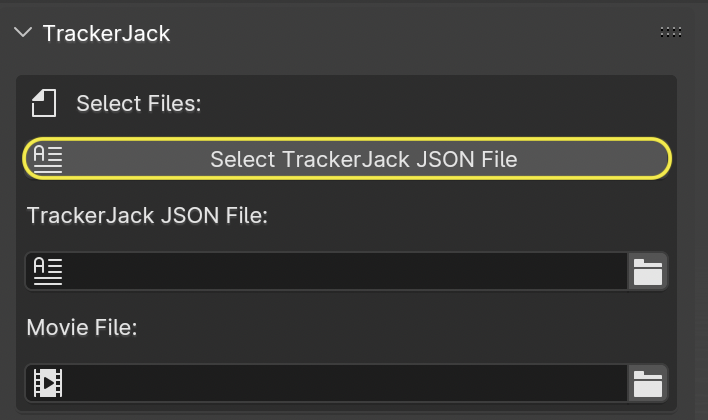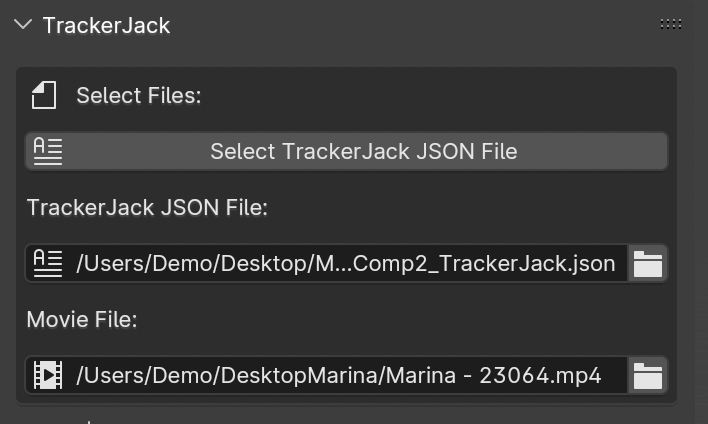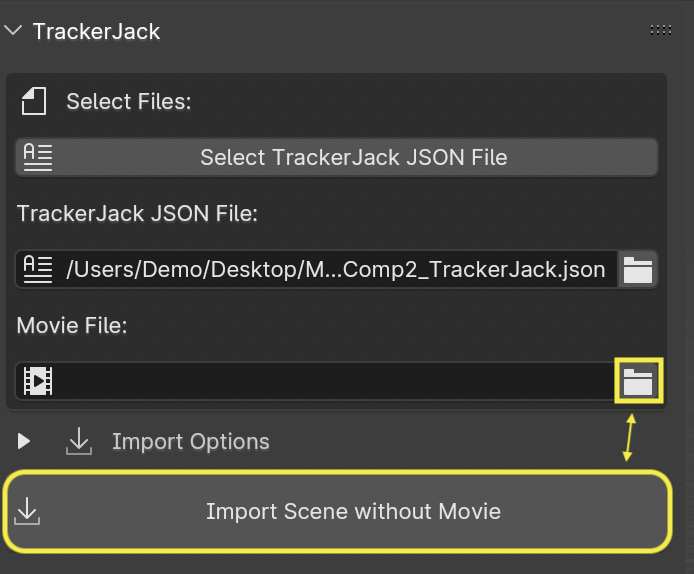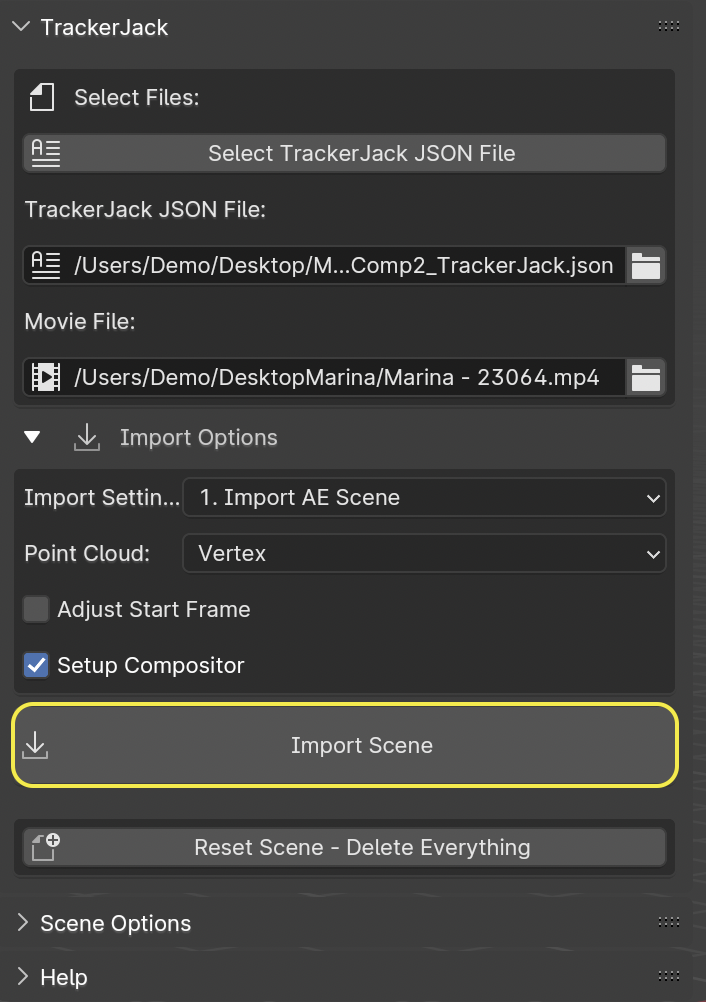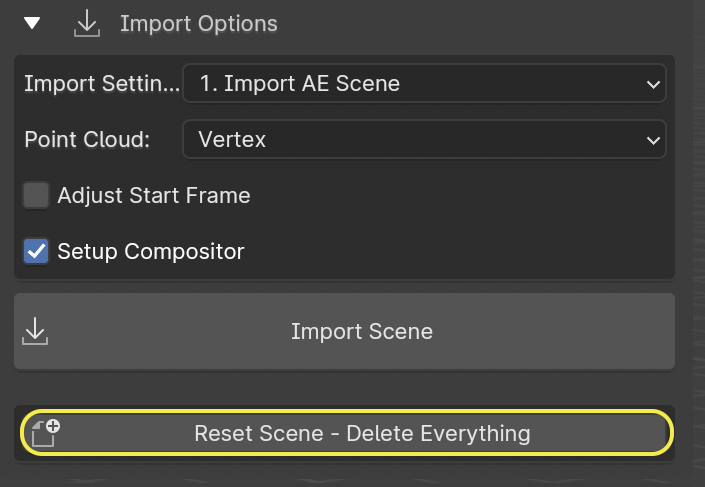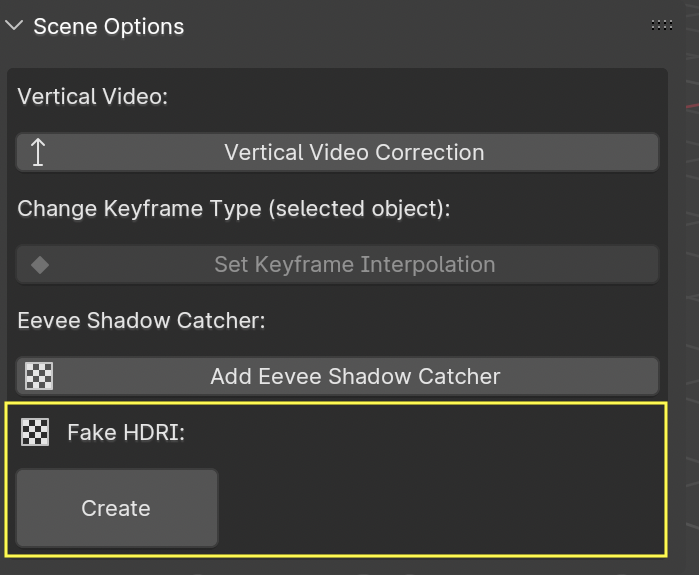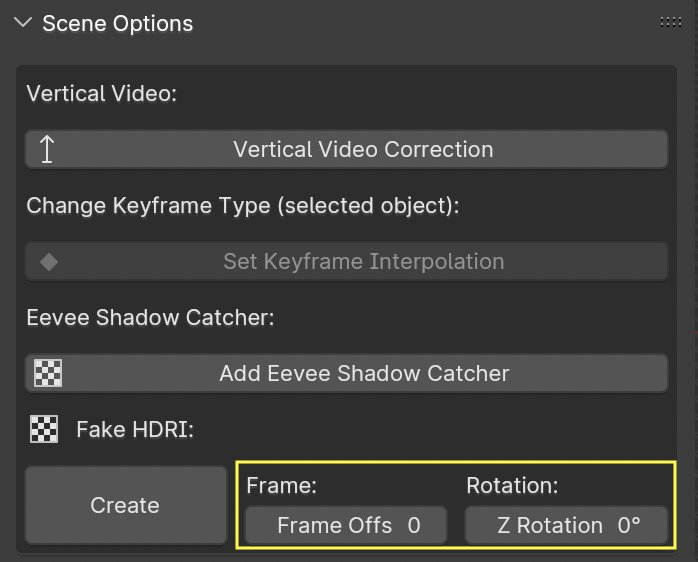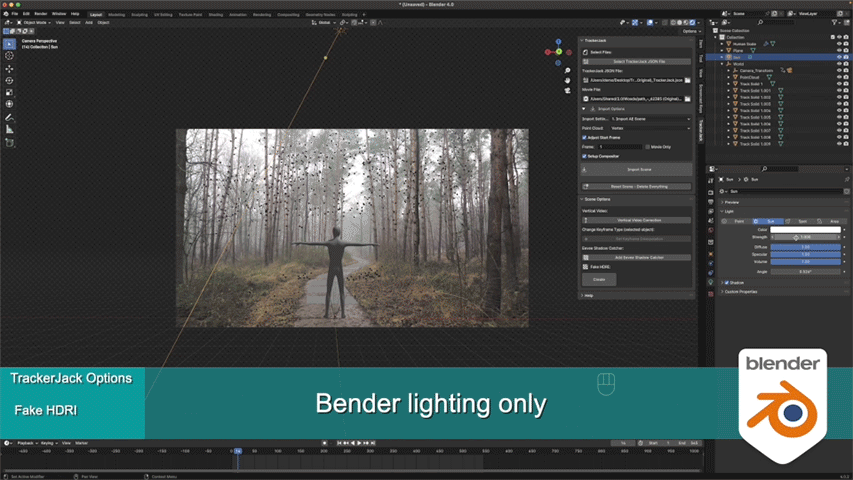Blender Panel Options
Install the Blender Add-on and open Blender if you haven’t already. The Blender panel is found in the 3D view ‘n’ panel. This panel has many options and powerful features that are not avaiable thru the simpler method at File > Import > TrackerJack AE Tracking Data(.json)
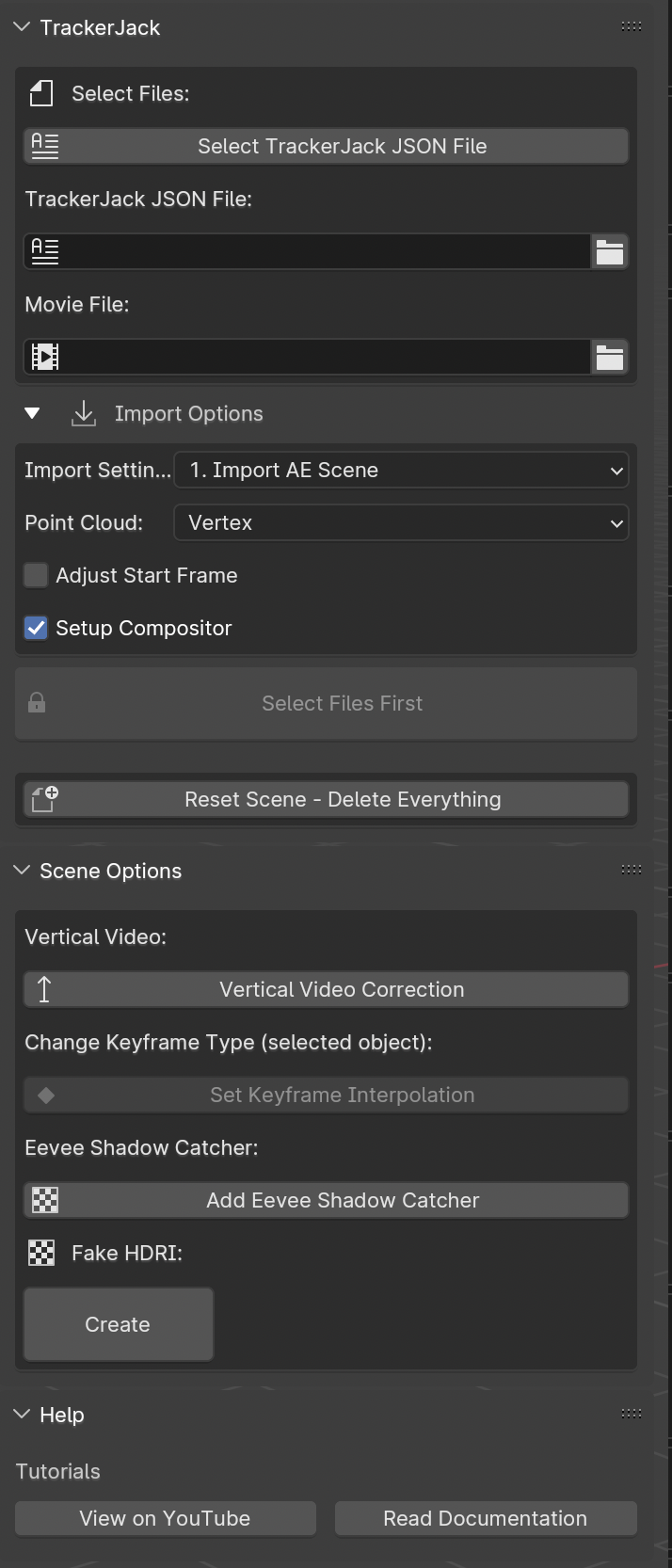
Select Files Panel
Import Options Panel
Import Settings (Drop Down Choice)
Import Settings has two options for how to import the After Effects items.
Import AE Scene - This is the default setting, to be used for the first import of a JSON file to set up your scene. It deletes everything in the scene, yes even that default mesh box, and imports the After Effects Tracked Scene.
Add Additional Tracked Items - Use this setting to update your scene with any with additional items you create in After Effects. This option is non-destructive, it adds new elements to the existing World Empty that is created after previously using Import AE Scene, because these new items are parented to the World they are already scaled and rotated.
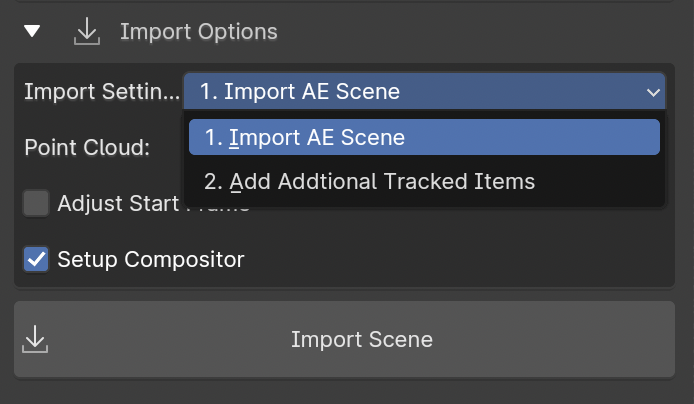
Point Cloud
The null layers in your After Effects file can be imported into Blender as vertices in a point cloud mesh, or as individual empty layers.
Vertex - This is the default setting, it is the fastest to import, and ready for modeling.
Empty - You may import each null as a Blender Empty, but it is considerably slower. It may take several minutes to complete.
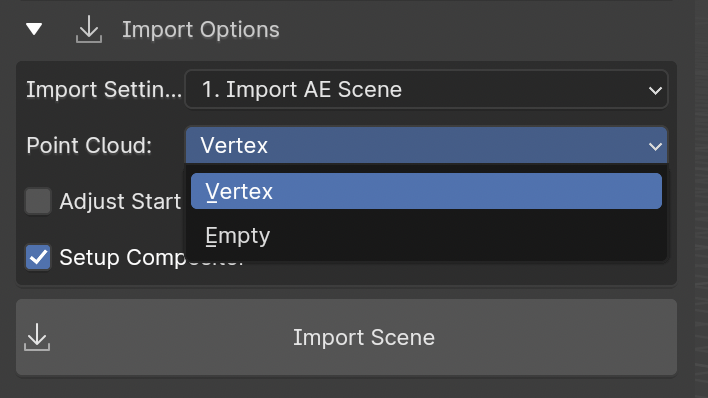
Start Frame Adjust
TrackerJack by default sets up the scene using the same start frame as your After Effects comp. However, depending on your source footage and workflow, the are times your After Effects comp might not start with frame 0. This results in your Blender scene being created later in your timeline. While you can change the start frame in the composition settings in After Effects before you export the JSON file with TrackerJack, you might find it easier to adjust where your footage begins in Blender by using this setting.
Enable - If Checked start frame will be adjusted. Frame - Enter the Frame Number in Blender where the scene should start. Movie Only - Click Enable if you want to adjust the movie start independent of the tracked camera. (Uncommon for most uses)
Setup Compositor
This setting is enabled by default. TrackerJack creates a very simple Compositor setup so you’re ready to render your created items with the background footage. Leaving this checkbox unchecked will skip this setup.
Enable - If checked the compositor will be enabled. If unchecked the compositor will not be enabled.
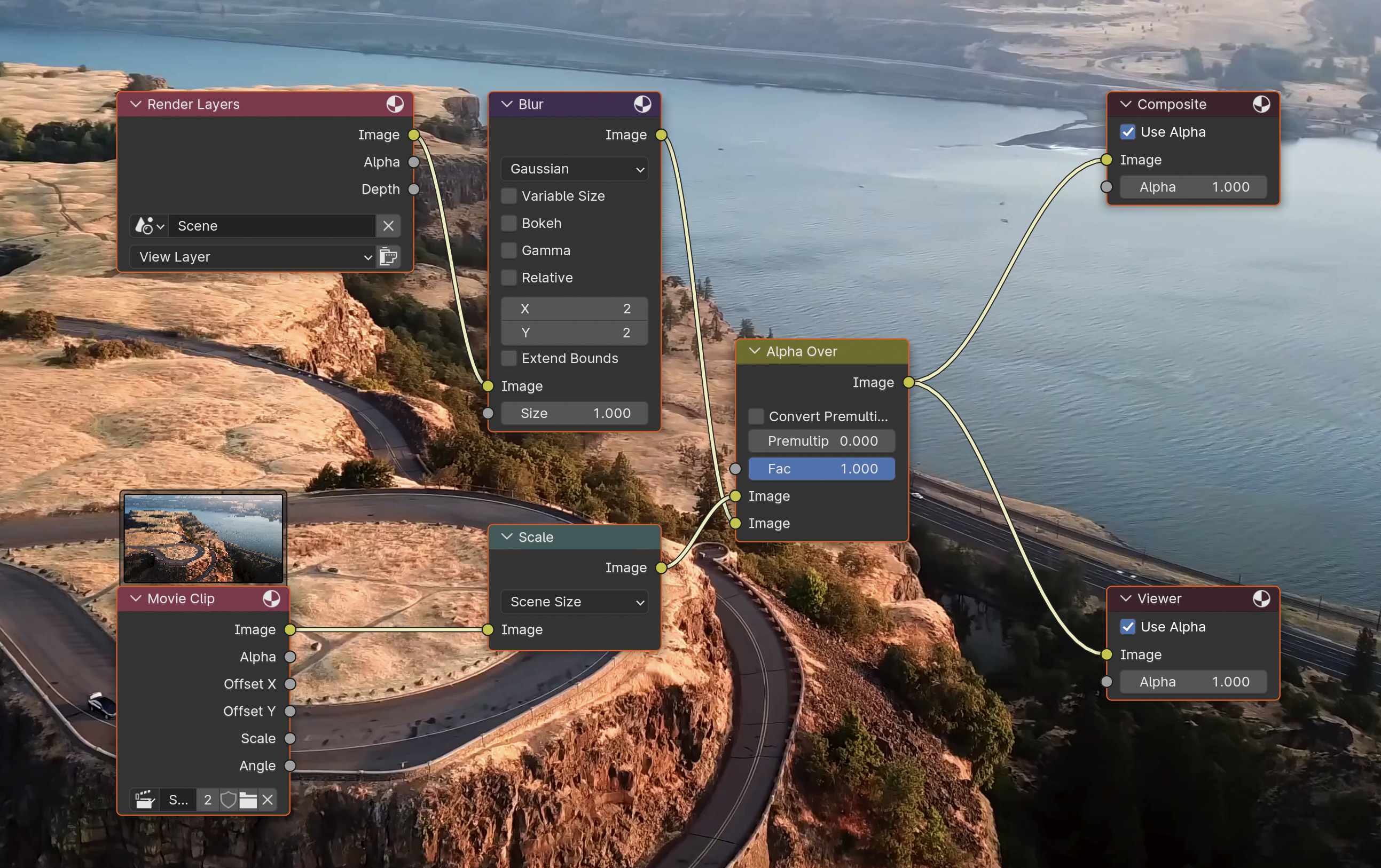
Scene Options Panel
The Scene Options panel contains several extras and bonus features that you can use after you’ve imported your scene to improve and adjust it.
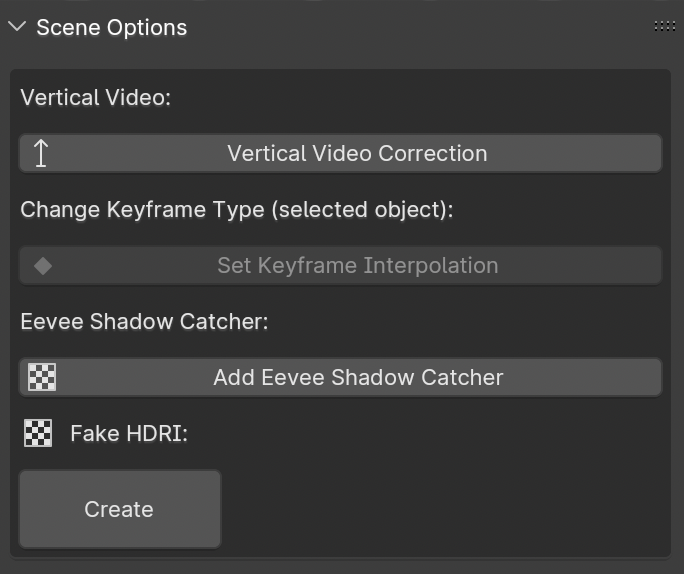
Vertical Video Correction
TrackerJack Supports the import and use of vertical or portrait orientation video. However some footage (primarily taken on smartphones) is recorded in horizontal orientation and encoded with a 90˚ rotation in the metadata. After Effects reads this and automatically interprets the footage as vertical, Blender does not. After you Import Scene with vertical video with this issue, when you Press ‘0’ to switch to the Camera view, or go to View -> Cameras -> Active Camera and press spacebar to play the timeline and update the scene, you will notice a problem with the background video.
Click the Vertical Video Correction button and the video will automatically be rotated to match your scene.
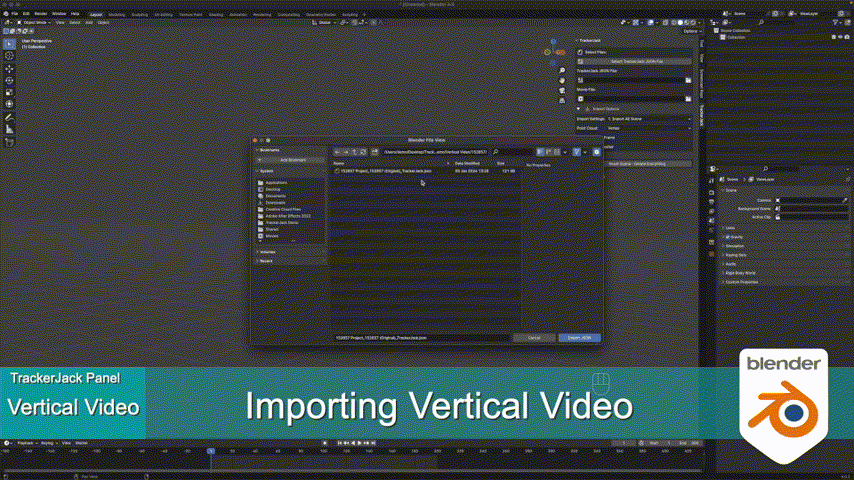
Set KeyFrame Interpolation
When you import After Effects layers that have postion and orientation key frame animation, TrackerJack automatically uses Linear interpolation for those key frames.
You can change this to any other interpolation that Blender supports by selecting the layer then clicking the Set Keyframe Interpolation button.
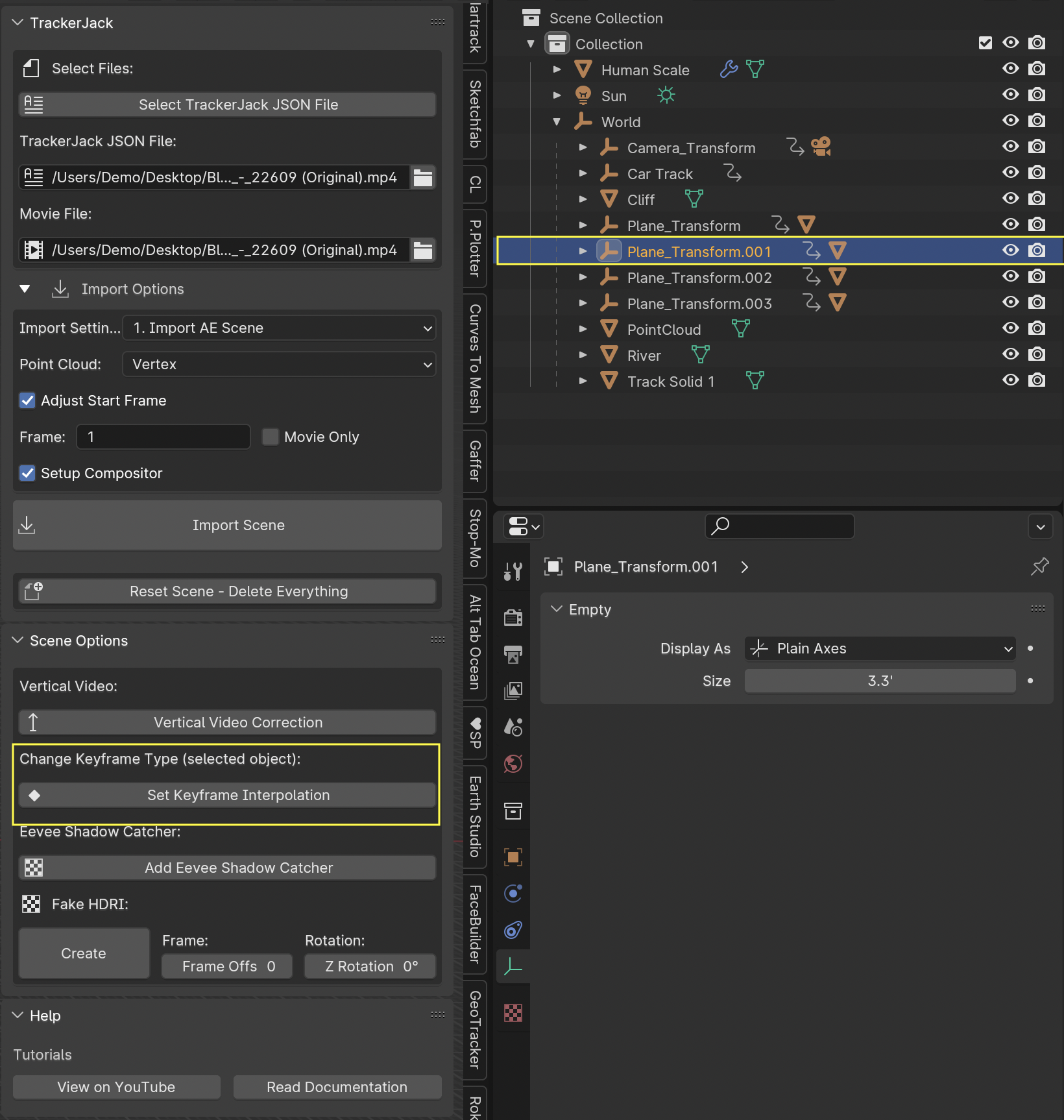
A pop up menu will appear and you can apply the new interpolation mode.
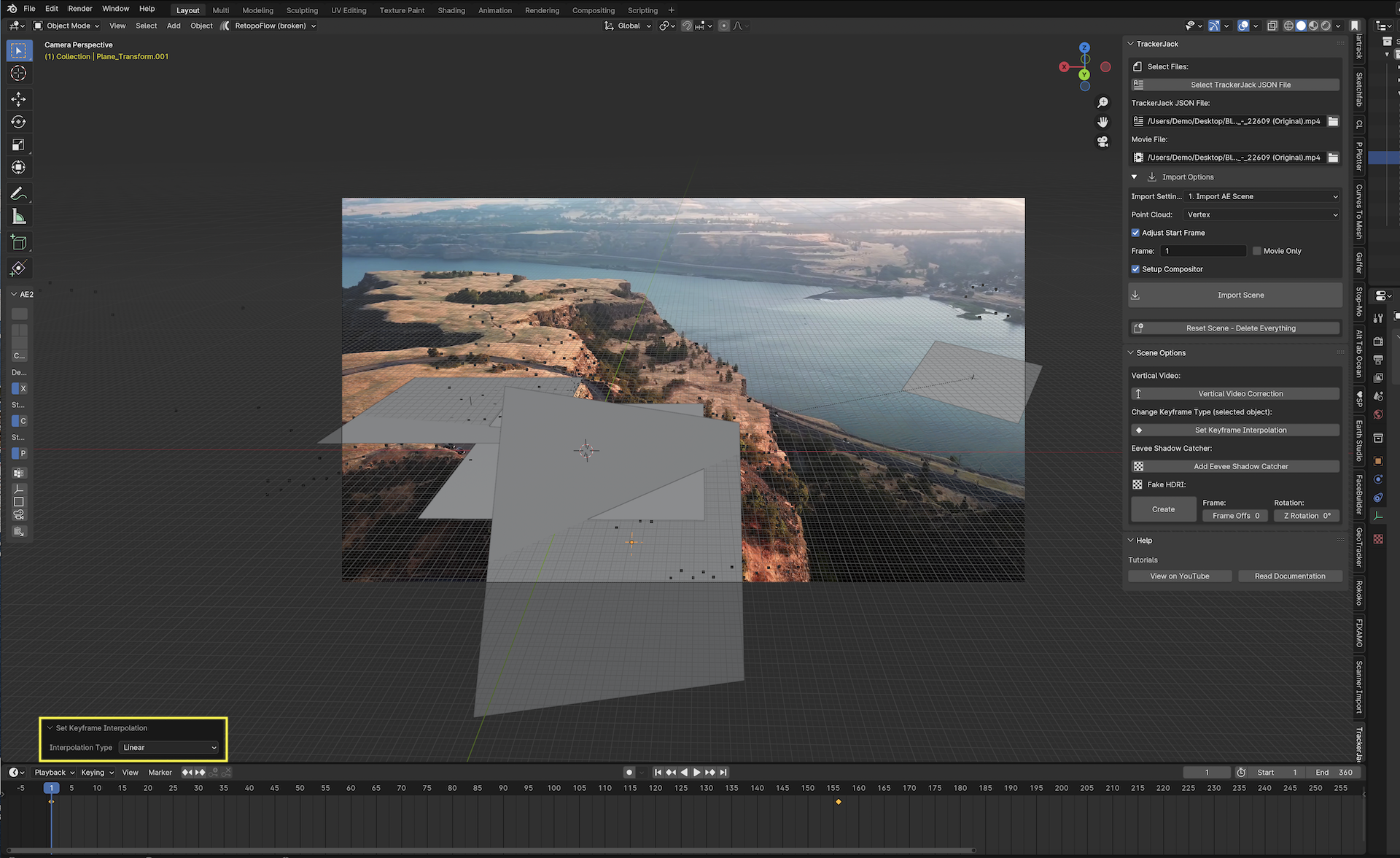
Tip
When using easing or any complex animation in After Effects, it’s better to use the Bake All Frames option in the After Effects TrackerJack Settings Panel to create keys for every frame of animation.
Add Eevee Shadow Catcher
The Eevee Shadow Catcher is a bonus feature. There are two ways to use it.
Any solid layer that you rename “Shadow” in After Effects before exporting, will automatically have the “ShadowCatcher” material appplied to the layer when it is imported into Blender.
Select a mesh layer in your scene. In Object mode click the Add Eevee Shadow Catcher button. The “ShadowCatcher” material will be appplied.
The “ShadowCatcher” material may require adjusting the Color Ramp and Subtract nodes in the Shader Editor in order to match your scene.
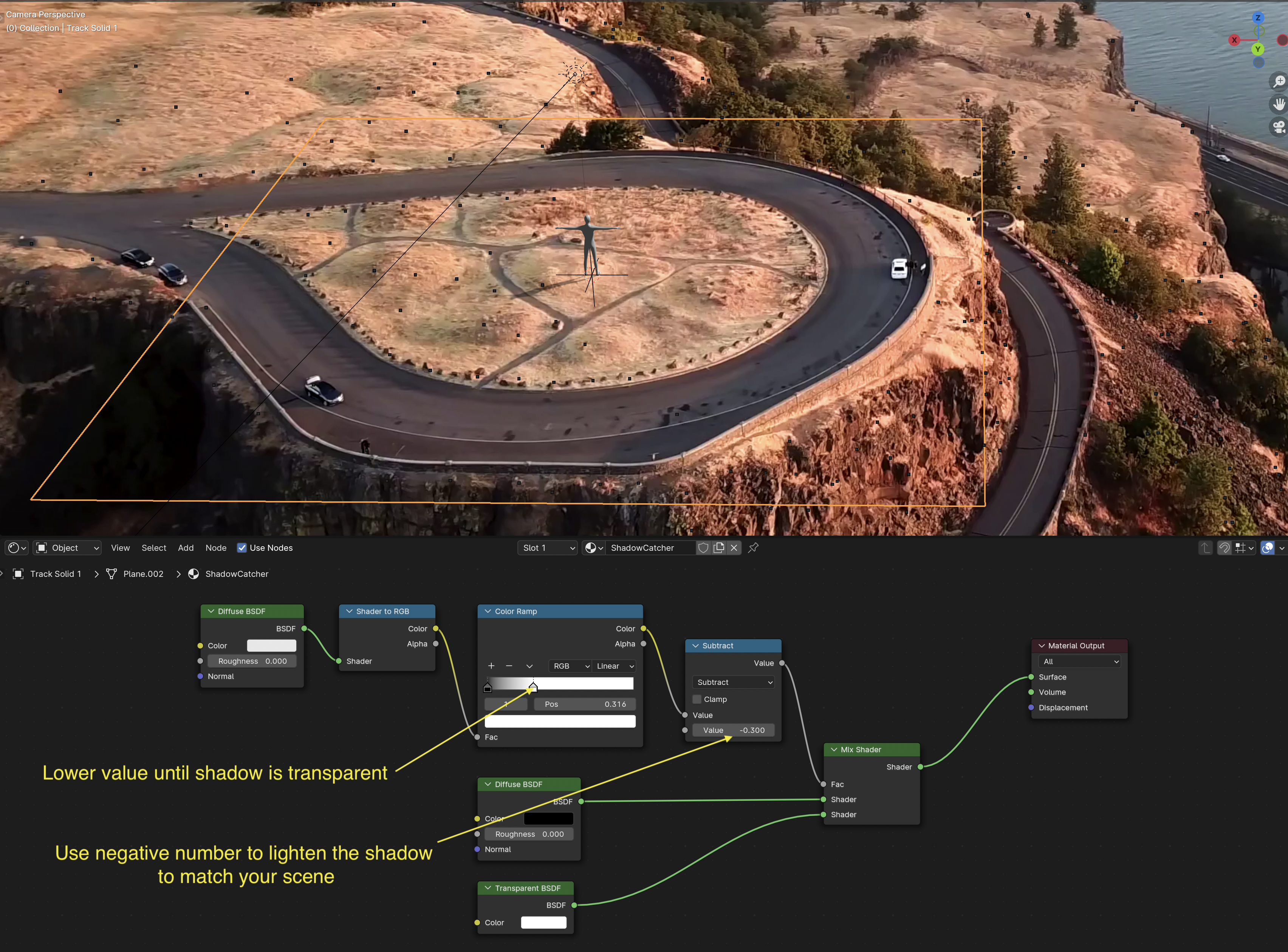
Tip
See the Eevee Shadow Catcher chapter in the quick start video here. Eevee shadows aren’t very high quality, but can be useful for previsualization. Eevee Shadow Catcher is best used for still images. For high quality renders and animation, cycles will provide the best results.
Help panel
The Help panel has a link to the Quick Start Video and to this online Documentation.

